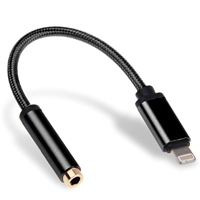
A universal serial bus (USB) connector is a connector between a computer and a peripheral device such as a printer, monitor, scanner, mouse or keyboard. It is part of the USB interface, which includes types of ports, cables and connectors. ...
A universal serial bus (USB) connector is a connector between a computer and a peripheral device such as a printer, monitor, scanner, mouse or keyboard. It is part of the USB interface, which includes types of ports, cables and connectors.
The USB connector was developed to simplify the connection between computers and peripheral devices. Prior to the USB interface, peripheral devices had a multitude of connectors. The USB interface provides various benefits, including plug-and-play, increased data transfer rate (DTR), reduced number of connectors, and addressing usability issues with existing interfaces.
The USB interface was developed in the mid-1990s and is standardized by the USB Implementers Forum (USB-IF). Originally, the standards defined two types of connectors, known as A-type and B-type. Both types use 4 flat pins with the first pin (the +5V supply voltage) and fourth pin (the supply ground) slightly longer to first connect the power supply. This substantially lowers the possibility of the data connection receiving voltages. In both types, the connection is held in place by friction.
A-Type connectors are used on devices that provide power, such as a computer, and have a flat and rectangular interface. They provide a downstream connection. B-Type connectors are used on devices receiving power such as a peripheral device. They have slightly beveled exterior corners on the top ends and are somewhat square in shape. They provide an upstream connection. Although there have been several revisions of the USB connector since the original standards were implemented, the majority of USB products still use A and B connector interfaces.
The USB connector is intentionally designed to be properly connected. It is impossible to connect it upside-down. The USB icon is imprinted on the top side of the plug, making it easy for visual alignment. Additionally, USB standards specify that a connector must support a compliant extension cable or fit within size restrictions.
There are several versions of USB connectors, which vary in their DTRs: USB 1.0 with DTR of 1.5 Mbps and 12 Mbps, USB 2.0 with DTR of 480 Mbps, and USB 3.0, or SuperSpeed, with DTR up to 5 Gbps.
The USB interface replaced a wide range of previous interfaces, such as serial and parallel ports and individual power chargers for portable devices. USB connectors are now commonly used with devices like network adapters and portable media players as well as video game consoles and smartphones. USB connectors are also used for devices requiring smaller USB connectors.
Customer Service
